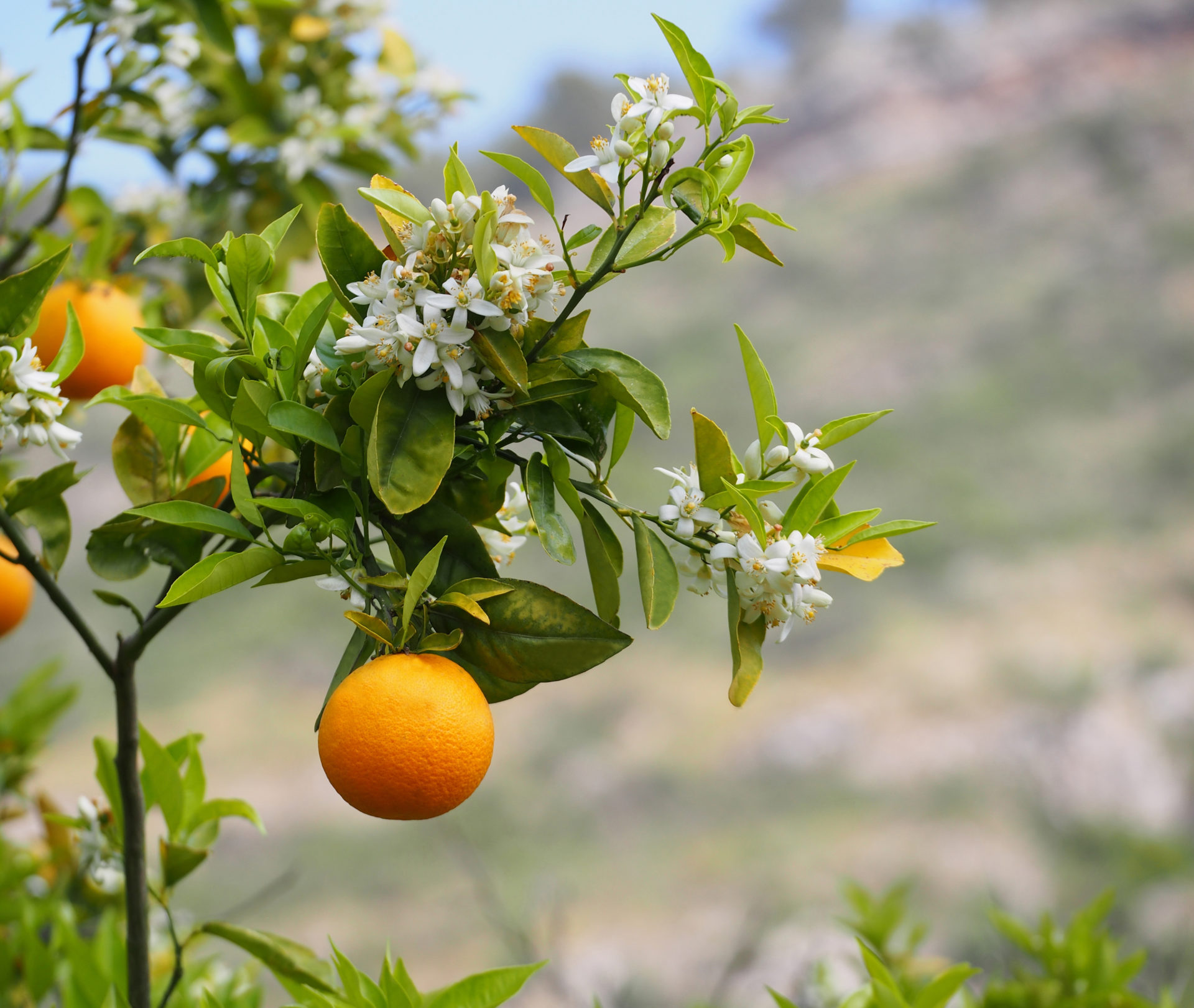Expertise • Fields of work • Perfumery
The Orange Tree Treasure of the Perfumer
This tree abounds in scent. It seems to have been created for the pleasure of our perfumers’ palettes. We exploit its leaves as much as its fruit, and of course its flowers, whose delicate, sensual scent inevitably reminds me of the orange trees in the magnificent garden of The Cellars Hohenort Hotel, one of the oldest buildings in Cape Town, South Africa.
We can trace in the oldest literature. It is said to have originated in Asia, then reached the banks of the Levant and formed the basis of the mythical Citrus Garden. In Europe it has been present for 1000 years, the Maures first planted them in Spain, then it gradually reached all the Mediterranean coasts. It was already used at that time in floral waters and in cooking. History has kept track of the only orange tree in the north of France at the beginning of the 15th century, that of the Versailles Orangery, known as the “Great Constable” in homage to the Constable of Bourbon who bought it in Pamplona in 1421 and transported it to Fontainebleau and then to the palace of the french King Louis the XIVth. It was so popular that it was later widely cultivated in pots and sheltered from forst in the famous orange groves. It was cultivated abundantly in the country of Grasse from the 17th century onwards, and orange blossom water has been an essential ingredient in Provençal cuisine since that time.
“Orange tree, tree that I adore, that your perfumes seem sweet to me.
Is there nothing pleasant like you in the empire of Flora?”
La Fontaine (French poet)
The distillation of the flowers of the bigarade orange tree gives us Neroli essence, which takes its name from Anne-Marie Orsini, Princess of Neroli, who in the 17th century made bitter orange essence fashionable as a perfume by using it for her gloves and bath. A ton of flowers are needed to make a single kilo of Neroli essential oil. By another process, that of extracting the flowers with solvents, one obtains the concrete, then the orange tree absolute. The flowers are harvested in Europe and North Africa between the end of March and the beginning of May, depending on climatic variations. The distillation water (or hydrolat) in which part of the essential oil is solubilized is called orange blossom water. By distillation of the leaves we obtain the petit grain essentiel oil.
Orange blossom absolute is highly appreciated in perfumery because it confers power, femininity, elegance and naturalness to the accords.
Because the orange tree has been spread all over the world, it has become an almost universal scent that speaks to most cultures.This is undoubtedly why it was an important component of perfumes such as Giorgio, Ysatis, Fracas, Poison, Amarige, Joop, Le Classique de Jean Paul Gaultier, and so many other perfumes that have become a part of the history of perfumery.
Having fallen into disuse since the early 2000s, it is regaining ground with the return of natural and floral fragrances, and can be found in creations such as Gabrielle by Chanel or Aura by Thierry Mugler.
At Fragrances Concerto, we have a privileged access to products from the bigaradier orange tree, for our creations but also at the disposal of our customers, do not hesitate to ask us about your needs.
Published March 7 2020
